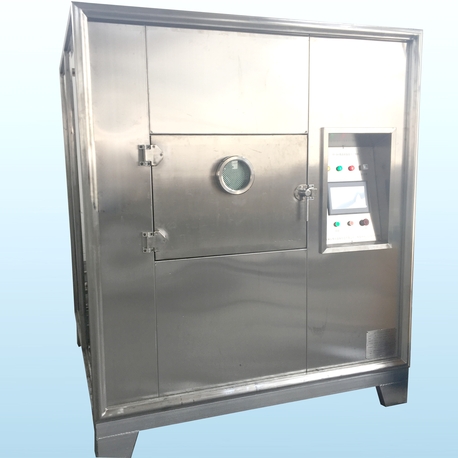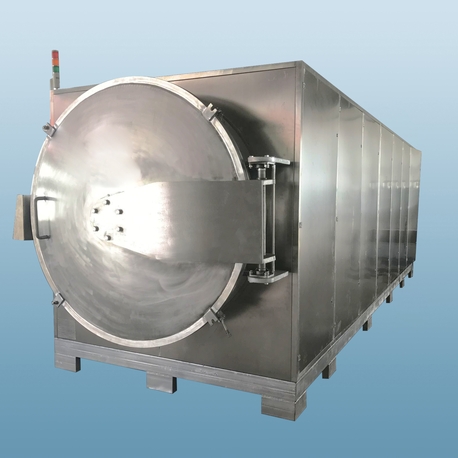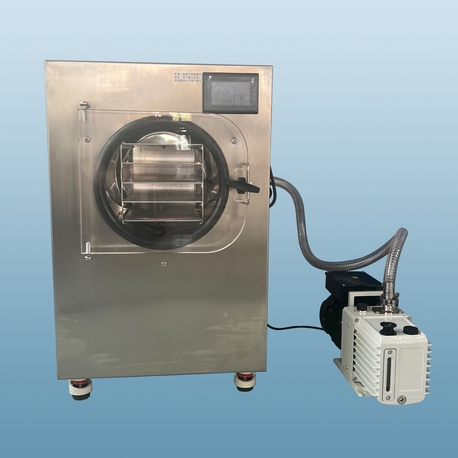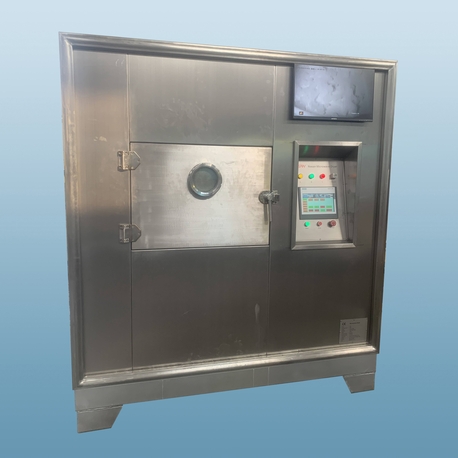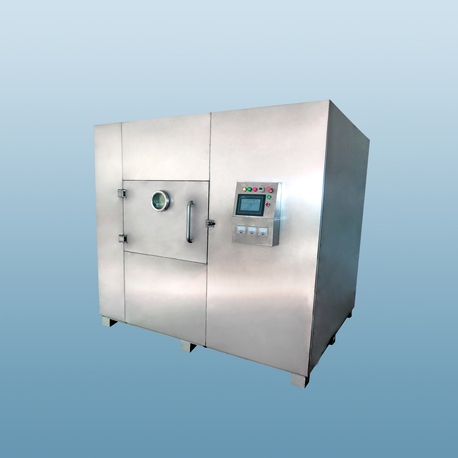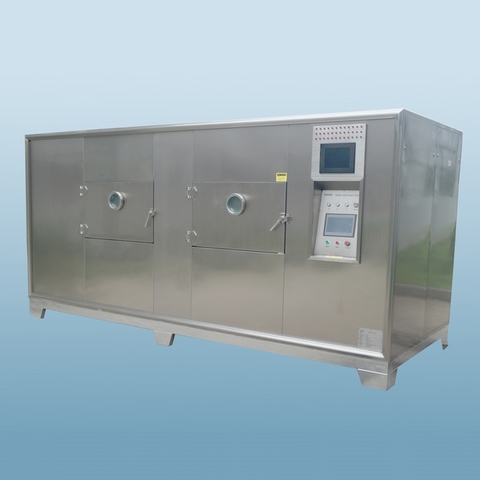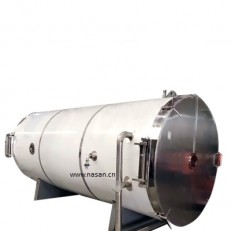The freeze dryer, a piece of equipment once confined to the specialized realms of pharmaceutical labs and space food preparation, has undergone a remarkable evolution. Today, it is an indispensable tool across a diverse range of industries, from food preservation and floral processing to pharmaceutical manufacturing and historical conservation. At the heart of this revolution is the modern lyophilizer machine with advanced features, a sophisticated system that has transformed a complex scientific process into a more accessible, efficient, and reliable operation. This article delves into the cutting-edge advancements in freeze-drying technology, explores the key benefits these features bring, and addresses the common challenges users may face.
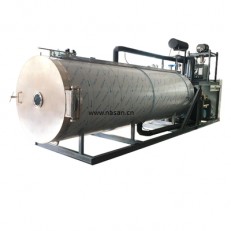
The Core Science of Freeze Drying: A Brief Refresher
Before we explore the advanced features, it's crucial to understand the fundamental process. Freeze drying, scientifically known as lyophilization, is a dehydration process that works by freezing a product, lowering the surrounding pressure, and then applying heat to allow the frozen water in the material to sublimate directly from the solid phase to the gas phase. This three-stage process (freezing, primary drying, and secondary drying) preserves the product's physical structure, biological activity, and chemical composition far better than traditional heat-based drying methods. The result is a stable, shelf-stable product that can be easily rehydrated with water.
The Modern Marvel: Key Advanced Features in Today's Lyophilizer Machine
The traditional freeze dryer was often a bulky, manually-operated unit requiring constant supervision. The contemporary lyophilizer machine with advanced features is a leap forward, integrating automation, precision control, and data integrity to ensure unparalleled results.
Precision Control and Automated Cycles
Modern units are equipped with sophisticated programmable logic controllers (PLCs) and user-friendly touchscreen interfaces. Operators can create, save, and execute complex freeze-drying recipes with precise control over critical parameters like shelf temperature, vacuum level, and drying times. This automation minimizes human error, ensures batch-to-batch consistency, and allows for unattended operation, even for cycles that run for days. This feature is paramount for industries like pharmaceuticals where reproducibility is non-negotiable.
In-Cycle Monitoring and Data Integrity
A significant advancement in the modern lyophilizer machine with advanced features is its ability to monitor the process in real-time. Features like manometric temperature measurement (MTM) and comparative pressure measurement allow the system to determine the end point of primary drying accurately—the moment when all ice has sublimated. This prevents under-drying (which leads to spoilage) or over-drying (which can damage delicate products). Furthermore, these systems come with built-in data logging capabilities, automatically recording all process parameters to ensure compliance with strict regulatory standards like FDA's 21 CFR Part 11.
Enhanced Efficiency and Eco-Conscious Design
Engineers have made tremendous strides in improving the efficiency of the freeze dryer. Key advancements include:
Energy-Efficient Compressors: Modern refrigeration systems are far more efficient, reducing electricity consumption significantly.
Vapor Condenser Efficiency: Improved condenser designs with larger surface areas can capture more water vapor faster, shortening the overall cycle time.
Oil-Free Vacuum Pumps: Many advanced systems now use oil-free, or "dry," vacuum pumps. This eliminates the cost and environmental hazard of purchasing, handling, and disposing of vacuum pump oil.
Clean-in-Place (CIP) and Sterilize-in-Place (SIP) Systems
For pharmaceutical and biotechnology applications, sterility is critical. High-end lyophilizer machine with advanced features often includes integrated CIP and SIP systems. CIP uses automated spray balls and internal circuitry to clean the entire chamber without disassembly. SIP uses pressurized steam to sterilize the chamber and shelves, ensuring an aseptic environment for processing injectable drugs. This automation reduces downtime between batches and minimizes the risk of contamination.
Modular and Scalable Designs
Manufacturers now offer a wider range of configurations, from benchtop units for R&D and pilot-scale studies to massive industrial-scale production machines. Crucially, many of these lyophilizer machine with advanced features are designed with scalability in mind. Process parameters developed on a small-scale unit can often be directly transferred to a larger production model, de-risking the scale-up process and accelerating time-to-market for new products.
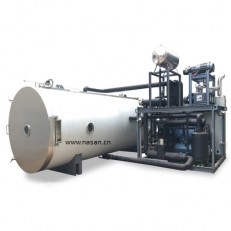
Common Challenges and Problems with Freeze Dryers
Even with the most advanced technology, operating a freeze dryer is not without its potential pitfalls. Understanding these common issues is the first step toward preventing them.
Incomplete or Failed Lyophilization
The most common problem is a product that is not properly dried. This can manifest as:
Meltback: The product melts during the process instead of subliming. This is often caused by too high a shelf temperature during primary drying or a loss of vacuum.
High Residual Moisture: The product feels damp or soggy after the cycle. Causes include an improperly set recipe (too short a secondary drying phase), a malfunctioning vacuum pump, or chamber leakage.
Contamination Issues
Contamination can ruin an entire batch. It can originate from:
Improper Loading: Introducing contaminants during the manual loading process.
System Leaks: A leak in the vacuum system can draw in non-sterile air or oil vapors from a faulty vacuum pump.
Inadequate Cleaning: Failure to properly clean the chamber between batches can lead to cross-contamination.
Mechanical and System Failures
Like any complex machinery, a freeze dryer can experience hardware problems:
Vacuum Pump Failure: The pump is the heart of the system. Oil degradation, loss of oil, or mechanical wear can lead to an inability to reach or hold the required vacuum level.
Refrigeration Compressor Issues: Problems with the compressor can prevent the shelves or condenser from reaching the necessary freezing temperatures.
Condenser Overload: If the product has too high a water content for the unit's capacity, the condenser can become overwhelmed, leading to ice melting and potentially damaging the pump.
Cycle Time Optimization
An inefficiently long cycle is a common frustration that increases operational costs. Long cycles are frequently caused by:
Overly Conservative Recipes: Using default or "safe" recipes that are longer than necessary.
Poor Product Formulation: The composition of the product itself (e.g., high sugar content) can form a hard, glassy matrix that slows down sublimation.
Inadequate Shelf Spacing or Loading: Overloading the shelves or using trays that impede heat transfer can significantly extend drying times.
Mitigating Problems with Advanced Technology
Interestingly, the very advanced features found in modern lyophilizers are the best defense against these common problems. Automated recipes prevent human error, real-time monitoring catches issues like a vacuum leak early, and data logging provides a forensic trail to diagnose any failures. CIP/SIP systems directly address contamination risks. Therefore, investing in a lyophilizer machine with advanced features is not just about gaining efficiency; it's also about ensuring robustness and reliability in your lyophilization process.
The humble freeze dryer has been reinvented. It is no longer just a simple dehydrator but a highly sophisticated, computer-controlled system designed for precision, efficiency, and reliability. The modern lyophilizer machine with advanced features empowers industries to preserve the most delicate and valuable products with unparalleled quality. By automating complex processes, ensuring data integrity, and improving sustainability, this technology is unlocking new possibilities in food science, pharmaceuticals, and beyond. While operational challenges can arise, a well-designed machine with proactive maintenance and a skilled operator can consistently produce perfect results, batch after batch. As technology continues to advance, we can expect freeze dryers to become even more intelligent, connected, and integral to innovation.


